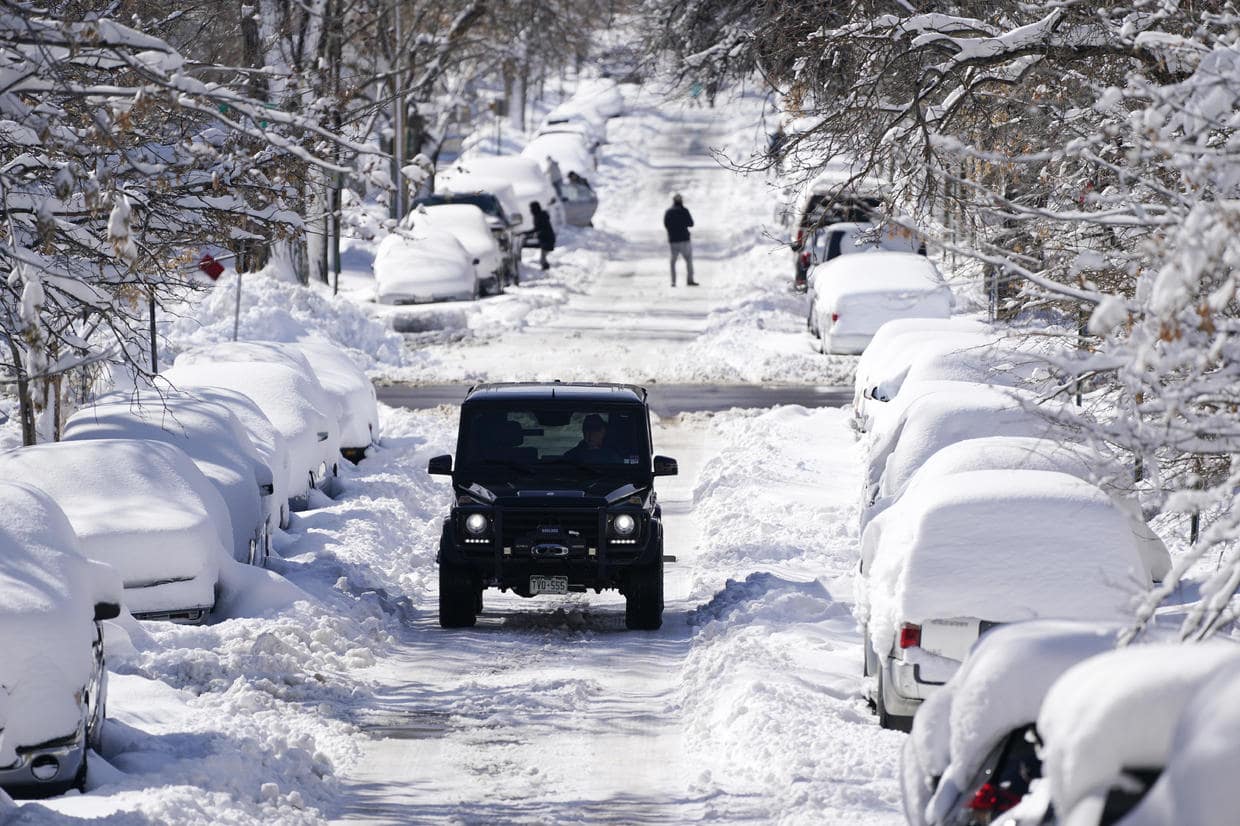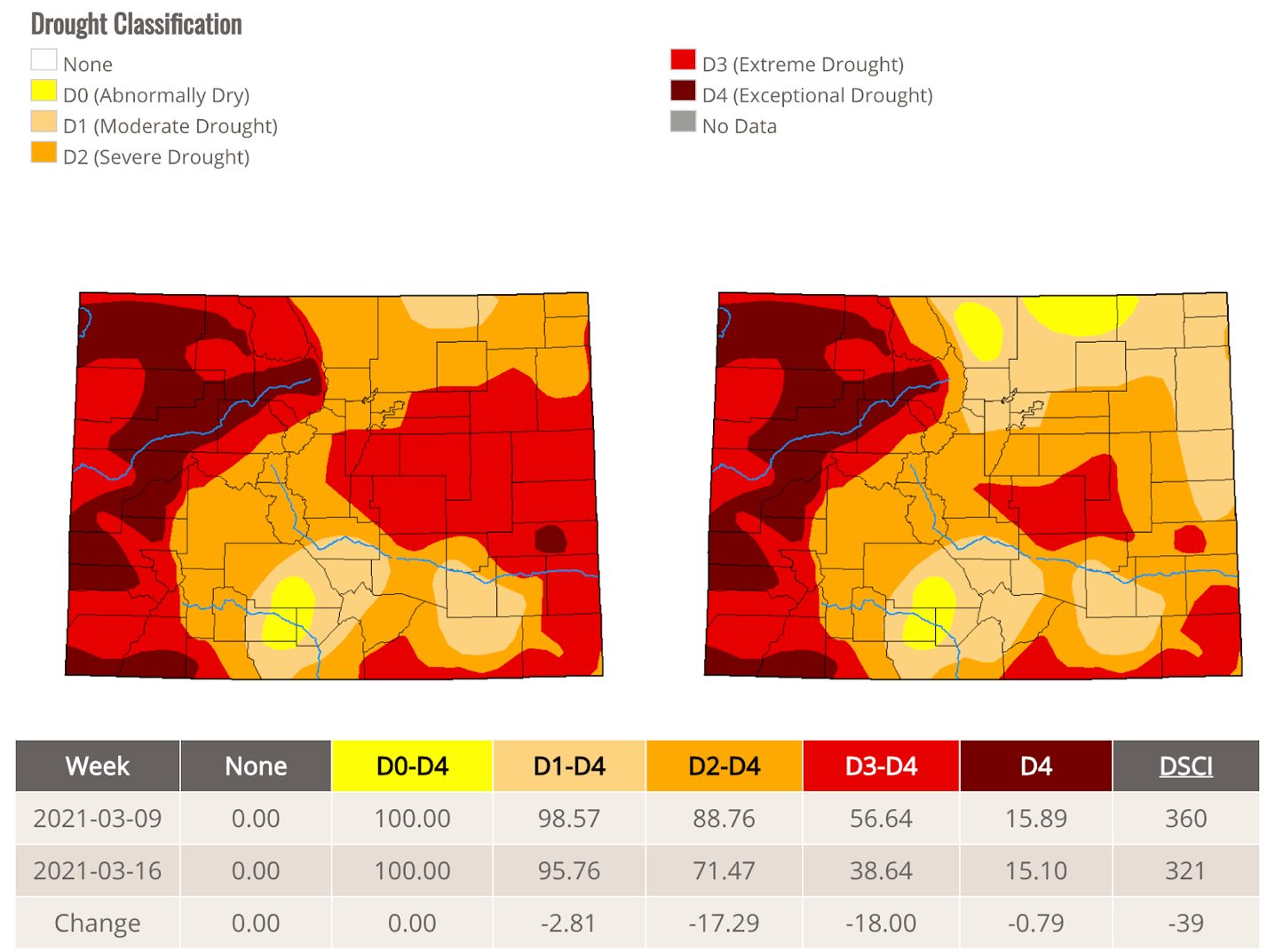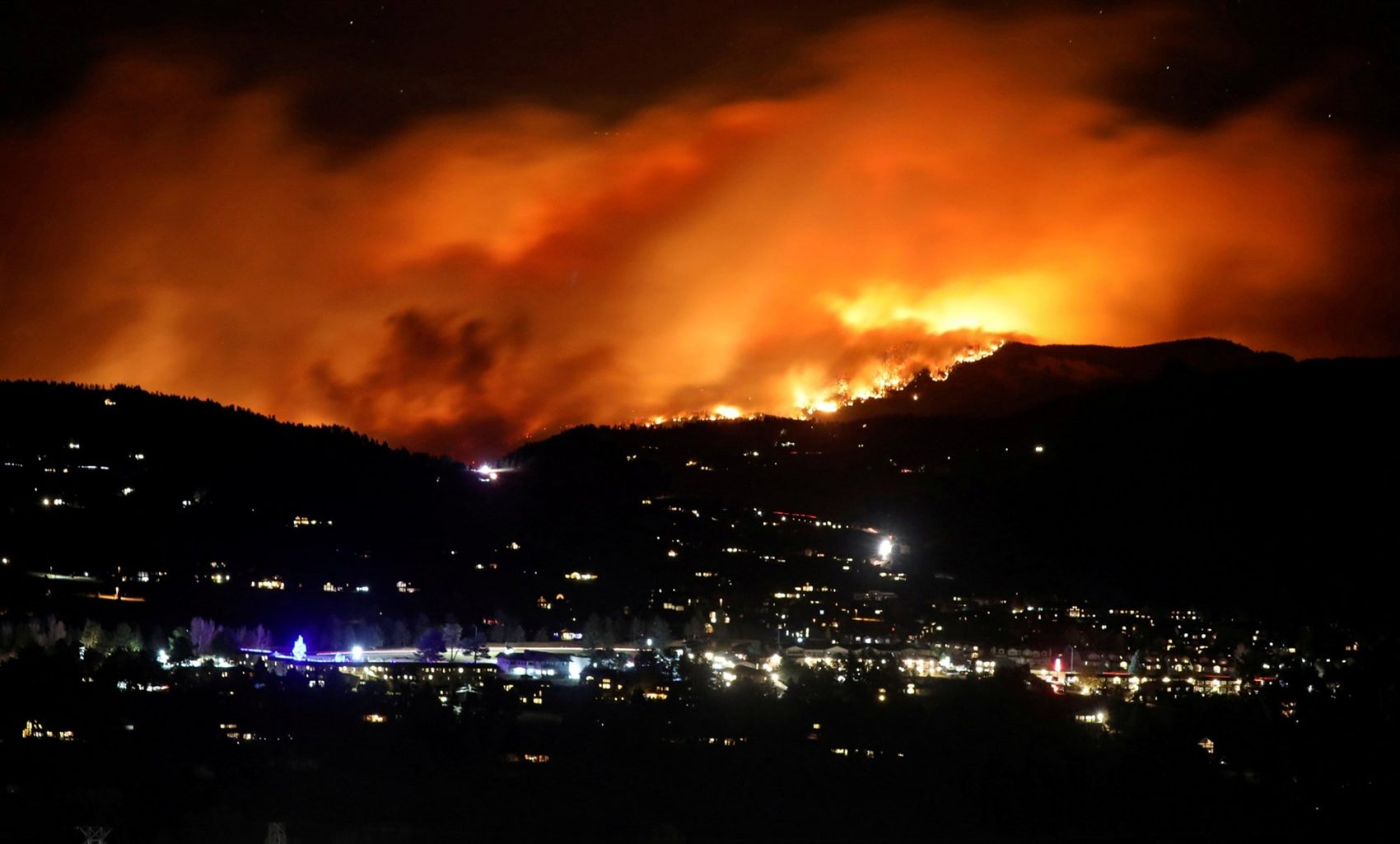
Last weekend, a massive winter storm hit the state of Colorado. Though a storm of this size is strange for this time of year, it brought needed moisture to the area. Heavy snowfall and precipitation have now reduced Colorado’s drought levels.
With central and eastern Colorado on storm alert, residents hunkered in to prepare for the approaching storm. When the storm came on Sunday, Denver was hit with two feet of snow, marking the fourth largest snowstorm in its history. Parts of eastern Colorado saw six inches of snow, while the foothills gained another three feet. The storm also garnered attention as it brought over a foot and a half more snow than usual for March. There was also an extremely wet snowfall, which helped raise moisture levels.
The US Drought Monitor reports that 99 percent of the state is experiencing moderate levels of drought. However, much of western Colorado is in a state of extreme drought. The relief provided by last weekend’s storm could reduce the risk of wildfires during the summer months, but that doesn’t mean Colorado can relax during the wildfire season. The state is still highly susceptible to burn. Even during a rainstorm, a lightning strike can ignite a fire that could spread rapidly.

Wildfires are not out of the ordinary in Colorado. Last year the Elephant Butte Fire burned west of Denver and forced the evacuation of over 1,000 homes. In the fall, Colorado experienced the biggest wildfire in its history as the Cameron Peak Fire burned over 207,000 acres. Climate change continues to add to the danger of wildfires. Rising temperatures and heatwaves dry out grasses and vegetation, creating a potent fuel for fire spread.
Unfortunately, one storm is not enough to wipe out drought completely. It will take repeated rain and snowfall to restore the land to safe levels of moisture. Until then, we must do our part in restoring our planet and be vigilant in minimizing the risk of wildfires.
